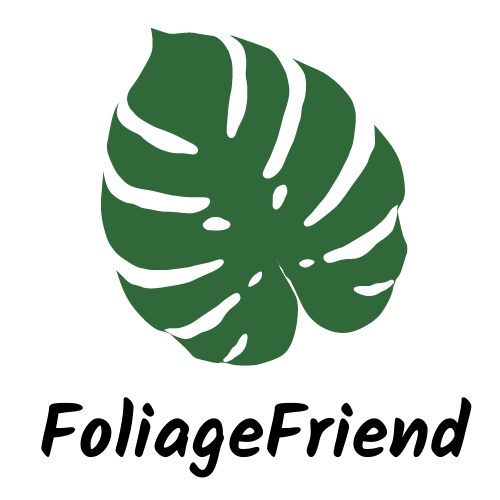Anthurium plants, also known as Flamingo Flowers, are popular due to their vibrant colors and long-lasting blooms. They can effortlessly add a touch of elegance to any home or garden. Unfortunately, while these plants may be beautiful, they can pose a significant risk to your beloved pets, particularly dogs.
These tropical plants are known to insoluble crystals of calcium oxalate are present in them, which are toxic to dogs, cats, and horses. When a dog chews on a leaf or stem, they may be exposed to these crystals, causing painful symptoms such as oral irritation, swelling of the mouth, lips, and tongue, excessive drooling, and difficulty swallowing. In severe cases, the ingestion of anthurium can result in more serious complications like vomiting and cardiac arrhythmia.
As a pet owner, it is crucial to keep your furry friend safe by being aware of the potential dangers that anthurium plants pose. If you suspect your dog has come into contact with the plant, be vigilant about monitoring their behavior and contact your veterinarian immediately for advice and assistance.
Is Anthurium Toxic to Dogs?
Toxicity Levels
Anthurium plants, also known as Flamingo plants, are indeed toxic to dogs. When ingested, these plants can cause a range of symptoms and discomfort for your canine friend. It’s essential to be aware of the potential risks associated with having anthurium plants around dogs and take appropriate measures to prevent ingestion.
The severity of the symptoms depends on the amount of plant material consumed. While a small nibble on an anthurium leaf may not lead to severe poisoning consequences, ingesting a significant portion of the plant can result in serious health issues for your pet.
Toxic Components
The primary toxic component of anthurium plants is the presence of insoluble calcium oxalate crystals. When a dog chews or swallows parts of the plant, these crystals can cause intense pain and irritation in the mouth and gastrointestinal tract. Symptoms of anthurium poisoning in dogs may include:
- Oral irritation
- Pain and swelling of the mouth, lips, and tongue
- Excessive drooling
- Vomiting
- Difficulty swallowing
To keep your dog safe, it’s best to avoid having anthurium plants in areas where your pets can access them. If you suspect your dog has ingested any part of an anthurium plant, it’s crucial to consult a veterinarian or contact the Animal Poison Control Center at 888-426-4435.
Symptoms
Treatment for Anthurium Poisoning
First Aid
If you suspect your dog has ingested an anthurium plant or is displaying symptoms of poisoning, it’s crucial to act quickly. The first step is to remove your dog from the source of the toxin, ensuring they cannot ingest any more. Quickly and carefully, remove any plant residue found in their mouth or fur. If possible, take a photo of the plant for reference when seeking veterinary assistance.
Your pet may exhibit signs of oral irritation, such as excessive drooling, pawing at their mouth, or difficulty swallowing. To help alleviate discomfort and inflammation, you can rinse your dog’s mouth with water using a syringe or a turkey baster. Be cautious when doing so, and make sure not to force water down your dog’s throat, as this may cause choking.
Keeping your dog hydrated during this time may help minimize the severity of symptoms. Encourage them to drink water, but don’t force them if they’re unwilling.
Veterinary Care
After administering first aid, promptly seek professional veterinary care for your dog. Anthurium poisoning can cause serious health issues, such as vomiting, labored breathing, and even obstruction of the airway. And, as mentioned in a Pet Poison Helpline article, factors like the amount ingested and your dog’s size can impact toxicity levels.
Your veterinarian will examine your dog, assess their symptoms, and determine the best course of action. Depending on the severity, the vet may provide supportive treatment or specific antidotes if available. They may also recommend monitoring your pet for any signs of deterioration.
To keep your dog healthy and protected, always be aware of the potential dangers posed by toxic plants like anthurium. Regularly monitor your pet’s environment and promptly remove any hazardous plants. Additionally, stay informed about other common hazards for dogs by consulting resources such as the American Kennel Club.
Prevention and Safety
In order to protect your dog from the potential risks of ingesting anthurium plants, several preventive measures can be taken.
Fence Your Plants
Creating a barrier around your anthuriums is essential for keeping your dog away from these toxic plants. You can install a small fence or place a protective net around the plants. This will prevent your dog from accessing and chewing on the plant. A physical barrier is the most effective method to ensure the safety of both your plants and your pet.
Indoor Plant Safety
If you have anthuriums as indoor plants, make sure to place them in an area where your dog cannot reach them. High shelves or hanging planters are great options for this purpose. Regularly check the area to ensure that any fallen leaves or debris are promptly cleaned up to avoid any accidental ingestion by your dog.
Alternatives and Non-Toxic Plants
Instead of having anthuriums in your garden or inside your home, consider replacing them with non-toxic plants that are safe for your dog. There is a wide variety of non-toxic plants available, such as:
- Spider plants
- Boston ferns
- Areca palms
- Maranta (prayer plants)
- Orchids
These plants not only provide beauty to your home and garden but also ensure a safe environment for your beloved pet. By choosing dog-friendly plants, you can enjoy their presence without worrying about any toxic hazards to your dog.
Frequently Asked Questions
Dog ate anthurium, now what?
If your dog has ingested any part of an anthurium plant, it’s essential to take immediate action as the plant contains insoluble calcium oxalate crystals that can cause symptoms like cardiac arrhythmia, diarrhea, dilated eyes, difficulty swallowing, excessive drooling, and hoarse barking. Contact your veterinarian as soon as possible to discuss the appropriate course of action.
Anthurium: Harmful to humans?
Yes, the anthurium plant is poisonous to humans if ingested. All parts of the plant contain oxalic acid, which is a corrosive poison. Signs of poisoning may include a burning sensation in the mouth and throat, difficulty swallowing, nausea, vomiting, and diarrhea.
Anthurium dangerous to fish?
There isn’t much information on whether anthurium is specifically dangerous to fish; however, it is generally discouraged to place potentially toxic plants into fish tanks, as they could contaminate the water and harm fish.
Anthurium and cat safety?
Similar to dogs, cats can also be adversely affected by the toxic compounds present in anthurium plants. If you suspect your cat has ingested any part of an anthurium, contact your veterinarian immediately.
Which anthurium part is toxic?
All parts of the anthurium plant are toxic, as they contain oxalic acid. When chewed or swallowed, the insoluble calcium oxalate crystals can cause a range of symptoms in animals and humans, necessitating immediate medical attention.
Flamingo flower vs. cats?
Flamingo flower is another name for anthurium, and it poses the same risks to cats as it does to dogs. If your cat has ingested any part of a flamingo flower, it is crucial to seek veterinary assistance as soon as possible.
Helpful Video

My name is Daniel Elrod, and I have been houseplant love ever since I was 17. I love how much joy they bring to any room in the home. I’ve always been amazed at how a few pots of flowing leaves can turn a drab and sterile office into an inviting place where people love to work at.























































































